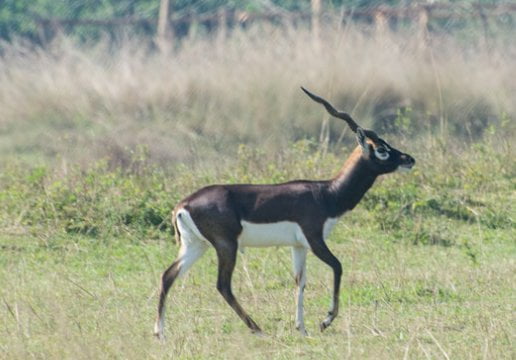Blackbuck Population On The Rise In Odisha

Bhubaneswar: It is time for wildlife lovers in the state to rejoice as the number of blackbucks has gone up significantly in Odisha.
Principal Chief Conservator of Forest Sandeep Tripathy said that a recently conducted census has revealed that the number has increased to 4,082. Some of them will be relocated from Ganjam to Puri and Chandaka as there is no blackbuck in the Puri-Konark Balukhand Wildlife Sanctuary.
According to a census conducted earlier this year, the number was 4,044.
These antelopes, locally known as Krushnasar Mruga, are protected by villagers in the Betnai-Balipadar area of Ganjam. The people here believe that these antelopes are a harbinger of good fortune when the state was in a state of despair due to drought centuries ago. A herd of Indian antelopes reached the village while roaming around in the forest and then followed rain! Thus, people started treating them as holy.
It began in 1918, when a Briton, Madeshi Chandramani Dora or ‘Green Saheb’ published an advertisement in a local daily prohibiting the killing of blackbucks.
Blackbucks, indigenous to the plains of India, are famous for the unique male antelope’s horns. The horns, 20-24 inches long, are V-shaped and spirally twisted with striking edges at the apex. Their black-and-white colour makes them stand-out. Female and younger males are usually reddish-yellow in shade.
Blackbucks are primarily grazers and thrive in the open Savannah. They feed on wild/fresh grass, vegetables, crops and tender leaves. During summer, when they meander in farms and eat away shoots of all crops, farmers happily serve them instead of driving them away.
The villagers tie tinkle bells around their neck and take care of the injured antelopes. For their relentless effort in keeping these mammals safe, Ganjam District Blackbuck Protection Committee had also won the first Biju Patnaik Award for Wildlife Conservation in 2004-05.

Comments are closed.